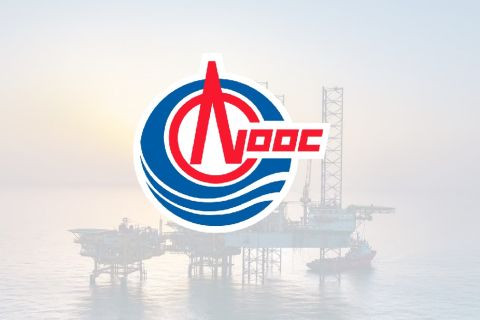
The hypothetical NGL barrel rose for the third straight week to its highest weekly average in three months and second-highest point for the year at both hubs tracked by Hart Energy.
With the fourth quarter upon us, what does that mean for price trends going forward? “Not out of the woods yet” was the theme expressed by Peter Fasullo, co-founder and principal of En*Vantage, in a recent presentation to Morgan Stanley.
To get an idea of how dense these woods are, consider the slowing growth in U.S. NGL extraction capability, which soared between 2010 and 2014. Fasullo acknowledged that the supply side should be helped by this, but surplus NGL supplies complicate matters overall.
He expects NGL extraction to peak in 2017, but noted that data could ultimately show that the peak occurred in 2016. If crude prices remain steady, Fasullo said, he would alter his forecast to reflect lower extraction over the next four to five years.
 Much about the short term depends on the weather. Avoiding high inventories of propane in spring 2017 requires a normal winter with healthy exports. That’s important, because the drawdown of 30 million barrels (MMbbl) to 35 MMbbl of propane from inventories won’t be enough by itself.
Much about the short term depends on the weather. Avoiding high inventories of propane in spring 2017 requires a normal winter with healthy exports. That’s important, because the drawdown of 30 million barrels (MMbbl) to 35 MMbbl of propane from inventories won’t be enough by itself.
But Fasullo expects a sharp drop in propane exports for winter 2016-2017 compared to 2015-2016. That’s because the spread is so shallow that customers like Japan can buy it much cheaper elsewhere.
But let’s say the U.S. endures a cold winter. In all likelihood, propane prices will go up and drawdowns will increase, but those higher prices will put pressure on export spreads unless customers in Asia and Europe are experiencing cold winters as well.
So let’s turn to the weather report: “Winter will be colder than normal on average, with slightly above-normal precipitation and near-normal snowfall.”
Granted, the preceding U.S. Northeast forecast is generated by The Old Farmer’s Almanac, but it aligns with expectations from AccuWeather, which also warns of potential citrus crop damage in the Southeast during a harsh January.
In general, though, weather predictions for fall and winter are “less confident” this year, Tony Barnston, chief forecaster at Columbia University, told CNBC, because of a weakening La Niña pattern. Strong weather patterns give forecasters something to work with. Weak ones mean the weather will be subject to random events and influenced by other variables that can’t be anticipated months in advance.
 In the past week, ethane climbed above 21 cents per gallon (gal) at Mont Belvieu, Texas, and above 18 cents/gal at Conway, Kan., for the first time since mid-year. The price is 10.2% higher than it was at the same time a year ago at Mont Belvieu and 12.1% higher at Conway.
In the past week, ethane climbed above 21 cents per gallon (gal) at Mont Belvieu, Texas, and above 18 cents/gal at Conway, Kan., for the first time since mid-year. The price is 10.2% higher than it was at the same time a year ago at Mont Belvieu and 12.1% higher at Conway.
Propane rose 5.6% at Mont Belvieu to push past 50 cents/gal and was up 6.8% at Conway. Mont Belvieu was 10.3% above the year-ago price; at Conway, the increase was 4.6%.
Butane’s gains were 3.9% at Mont Belvieu and 6% at Conway. Compared to a year ago, Mont Belvieu was 9.6% higher and Conway was up 9.5%.
Weekly gains for isobutane were less than 4% at both hubs, but year-over-year increases were 18.7% at Mont Belvieu and 10.8% at Conway.
C5+ was up 2.9% at Mont Belvieu and 1.4% at Conway, continuing the seesaw trend of the past four weeks.
Storage of natural gas in the Lower 48 rose by 49 billion cubic feet (Bcf) in the week ended Sept. 23, the U.S. Energy Information Administration reported. The increase, less than the Bloomberg consensus average of 55 Bcf, results in a total of 3.6 Tcf. That’s a 2.6% increase over the 3.51 Tcf total at this time in 2015 and 6.5% above the five-year average of 3.38 Tcf.
 Joseph Markman can be reached at jmarkman@hartenergy.com and @JHMarkman.
Joseph Markman can be reached at jmarkman@hartenergy.com and @JHMarkman.
Recommended Reading
CNOOC Brings Online Phase 2 of Natgas Project in South China Sea
2024-09-30 - CNOOC’s Shenhai-1Natural Gas Development Project is expected to reach peak production in 2025.
GeoPark Announces Production Start at Argentina’s Confluencia Norte
2024-11-12 - GeoPark expects production at the Confluencia Norte Block in Rio Negro, Argentina to reach its peak within 90 days of startup.
E&P Highlights: Oct. 28, 2024
2024-10-28 - Here’s a roundup of the latest E&P headlines, including a new field coming onstream and an oilfield service provider unveiling new technology.
CNOOC Makes Ultra-deepwater Discovery in the Pearl River Mouth Basin
2024-09-11 - CNOOC drilled a natural gas well in the ultra-deepwater area of the Liwan 4-1 structure in the Pearl River Mouth Basin. The well marks the first major breakthrough in China’s ultra-deepwater carbonate exploration.
First Helium Plans Drilling of Two Oil Targets in Alberta
2024-11-27 - First Helium Inc. has identified 10 other sites in the Leduc formation.
Comments
Add new comment
This conversation is moderated according to Hart Energy community rules. Please read the rules before joining the discussion. If you’re experiencing any technical problems, please contact our customer care team.






